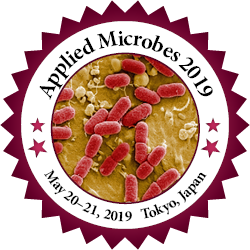
Lucia Aquilanti
Politecnica delle Marche, Italy
Title: Microbiota and key technological features of naturally fermented Crithmum maritimum sprouts
Biography
Biography: Lucia Aquilanti
Abstract
Crithmum maritimum (sea fennel) is a halophyte plant that grows spontaneously along the Italian East coasts; it is equipped with adaptive mechanisms that enables it to complete its entire life-clycle at high salinity and hence to generate economic yields although exposed to salt stress conditions. Its valuable nutritional and functional traits (i.e. high content in C vitamin, flavonoids, polyphenols, etc.) makes this blue source a sustainable and economically valuable opportunity for industrial manufacturing/commercialization of high value products. Currently, sea fennel is only marginally exploited by few artisan or semi-industrial enterprises for manufacturing of unfermented preserves in brine or olive oil, pesto-like sauces, fresh-cut and semi-finished products and no fermented preserves are commercialized, yet in either national and international markets. Given these premises, this research was aimed at exploiting Italian sea fennel cultivars, with a high adaptation to adriatic climates, high nutrients density and unique functional properties, for the production of fermented sea-fennel based preserved. To this end, the microbiota dominating during the natural fermentation of sea fennel sprouts in brine was monitored by using culture-dependent (viable counting, isolation of pure cultures) and independent microbilogical methods (PCR-DGGE and next-generation sequencing). In parallel, the main techconological parameters of the fermented sea fennel sprouts (pH, TTA, lactic acid and acetic acid contet, C vitamin content) and the isolated lactic acid bacteria cultures (acidifying activity, CO2 production, etc.) were also investigated. As a result, the main lactic acid bacteria species guiding the fermentation were identified, isolated and preliminary characterized.

